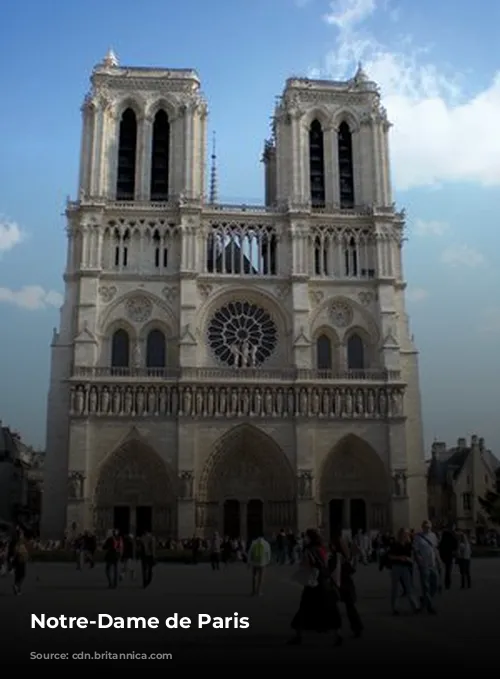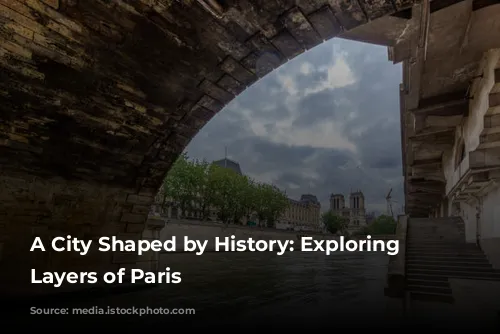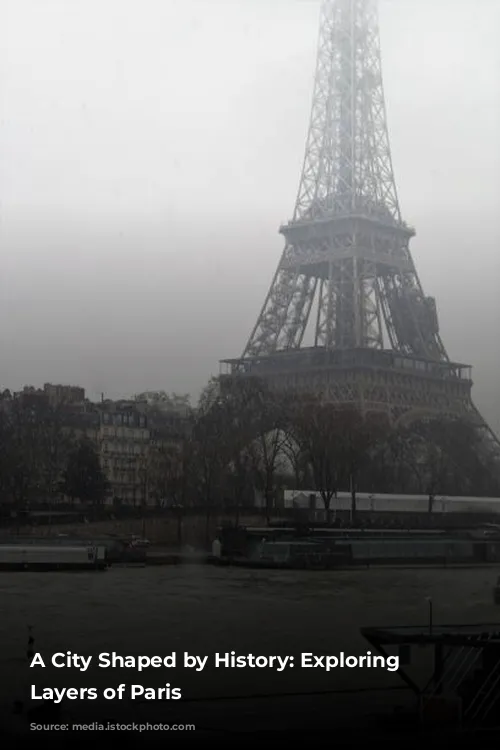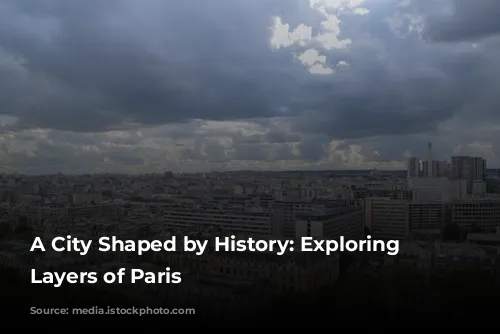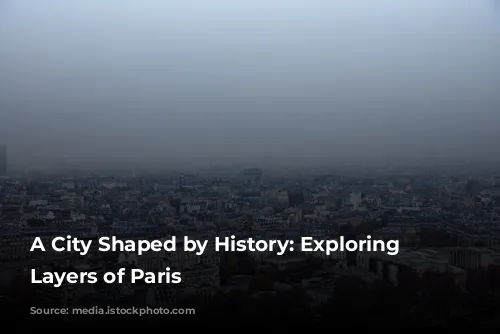Paris, nestled on the western edge of Europe, enjoys a mild climate influenced by the Gulf Stream. Its weather, however, can be quite unpredictable, especially during winter and spring when chilly winds sweep through the city. Despite the occasional sharp temperature drop, Paris boasts a pleasantly temperate climate with an average annual temperature in the low 50s Fahrenheit (around 12 degrees Celsius). Summer brings average temperatures in the high 60s Fahrenheit (about 19 degrees Celsius), while winter dips to the high 30s Fahrenheit (around 3 degrees Celsius). Paris experiences about a month of freezing temperatures each year, with snow falling on roughly half of those days. The city has made significant strides in reducing air pollution and improving water quality, making tap water safe to drink.
Walls of Protection: Fortifications and Transformation
Throughout history, Paris has grown and expanded, with walls erected to protect its citizens and define its boundaries. After Roman settlements on the Left Bank were ravaged by barbarians in the 3rd century, the city’s inhabitants rebuilt a defensive wall on the Île de la Cité, using the blackened stones from the destroyed settlements. This wall, built and rebuilt over centuries, stood as a testament to the city’s resilience in the face of threats. The Petit Pont (Little Bridge), one of the earliest bridges connecting the Left Bank to the Île de la Cité, was guarded by a fortified gate known as the Petit Châtelet. The Pont au Change (Exchange Bridge) to the Right Bank was defended by the formidable Grand Châtelet, which served as a fort, prison, torture chamber, and morgue until its demolition in 1801.
King Philip II, in the 13th century, constructed a new wall that enclosed the settlements on both banks of the Seine, providing a more comprehensive shield for the growing city. Charles V later expanded the Right Bank enclosure, with the imposing Bastille fortress guarding the east and the Louvre fortress protecting the west. Louis XIV, in the 17th century, replaced the old walls with tree-lined boulevards, a symbol of Paris’s newfound prosperity and power. The Grands Boulevards, stretching from the present-day Place de la Madeleine to the Place de la République, became a popular promenade for Parisians.
The 18th century saw the construction of a new wall with 57 tollhouses, a measure designed to collect customs duties on goods entering Paris. These historic tollhouses still stand today, a reminder of the city’s economic growth and the role of trade in its prosperity. The final wall, built in the 19th century by Adolphe Thiers, was a modern military installation complete with outlying forts. This wall, constructed at the time of King Louis-Philippe, enclosed several hamlets outside Paris, including Auteuil, Passy, Montmartre, La Villette, and Belleville.
A City Transformed: From Walls to Boulevards
The 19th century marked a period of dramatic change and renewal in Paris. The Industrial Revolution fueled economic growth, and a wave of new opportunities drew people to the city, accelerating its population growth. The expansion of railways provided greater access to the city, facilitating this influx of new residents. Baron Haussmann, the city planner, played a crucial role in shaping the city’s landscape, demolishing the walls of the farmers-general and creating wide, straight boulevards that cut through the narrow streets of the old city. This bold transformation, although controversial at the time, created a more spacious and modern urban environment. The boulevards, initially built on the site of the 19th-century walls, were eventually extended in 1925.
The Heart of Paris: Île de la Cité
The Île de la Cité, a ship-shaped island in the heart of Paris, holds the city’s historical soul. This small island, about 10 streets long and 5 wide, is linked to the banks of the Seine by eight bridges, with a ninth bridge connecting it to the smaller Île Saint-Louis to the southeast. The Pont Neuf (New Bridge), despite its name, is the oldest of the Paris bridges. Its sturdiness has become legendary, with Parisians often using the phrase “solid as the Pont Neuf” to describe something strong and dependable. The Pont Neuf, supported by the tip of the Île de la Cité, extends five arches to the Left Bank and seven to the Right Bank. Its parapet corbels are adorned with 250 grotesque masks, adding a touch of whimsy to its historic structure. For 200 years, the Pont Neuf served as the main thoroughfare and bustling marketplace of Paris. The bridge undergoes regular repair and maintenance, ensuring its preservation for generations to come.
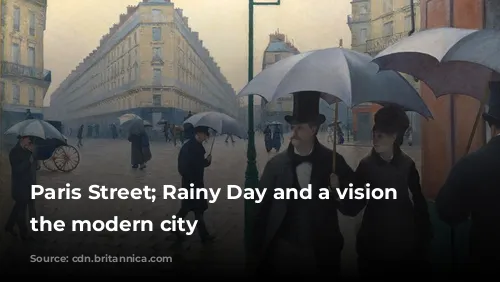
A Legacy of Kings and Queens: Historic Monuments and Landmarks
The Île de la Cité, with its historic monuments and architectural treasures, stands as a powerful testament to Paris’s rich past. The tip of the island is transformed into a triangular gravel-pathed park, providing a tranquil retreat for those seeking a respite from the city’s energy. This charming park, lined with flowering bushes and ancient trees, is surrounded by a wide cobbled quay that is particularly popular among sunbathers and lovers. A bronze equestrian statue of King Henry IV, who played a crucial role in the completion of the Pont Neuf, stands at the entrance of the park, a reminder of the city’s royal heritage.
The Place Dauphine, a small triangular square, stands across from the park, its name a tribute to Henry IV’s heir, the future Louis XIII. The square, once a cluster of red-brick houses trimmed with white stone, lost some of its original charm when a portion of the Palace of Justice was built on its edge in 1871. This majestic palace, built on the site of the early Roman governor’s palace, was rebuilt in the 13th century by King Louis IX and expanded by Philip IV in the 14th century. The Conciergerie, a stark grey-turreted structure, was added to the palace complex by Philip IV, its Gothic chambers echoing with stories of the past. The Great Hall, once the meeting place of the Parlement (the high court of justice), was renowned for its Gothic beauty. While fires in 1618 and 1871 destroyed much of the original hall, it still stands today as a waiting room for the various courts of law housed in the Palace of Justice.
The Sainte-Chapelle, a masterpiece of Gothic Rayonnant style, stands within the palace courtyards, a shining jewel of French architecture. Built at the direction of King Louis IX between 1243 and 1248, the Sainte-Chapelle was designed to house the Crown of Thorns, believed to be the very crown worn by Jesus during his crucifixion. Louis IX purchased this relic from the Venetians, who had obtained it from Baldwin II Porphyrogenitus, the Latin emperor of Constantinople. The Sainte-Chapelle also holds other holy relics, including nails and pieces of wood from the True Cross. These precious relics are now housed in the treasury of Notre-Dame.
The Île de la Cité underwent a significant transformation in the 19th century under King Louis-Philippe and his successor, Napoleon III. Baron Haussmann’s grand project included clearing antiquated structures, widening streets and squares, and constructing massive new government buildings. A portion of the Palace of Justice, bordering the Quai des Orfèvres, became the headquarters of the Police Judiciaire (Judicial Police), while the Police Prefecture, another 19th-century structure, stands across the boulevard du Palais. The Place du Parvis-Notre-Dame, an open space significantly enlarged by Haussmann, now stands on the far side of the Police Prefecture. The Hôtel-Dieu, the first hospital in Paris, was relocated by Haussmann to the inland side of the square, its present buildings dating back to 1868.
